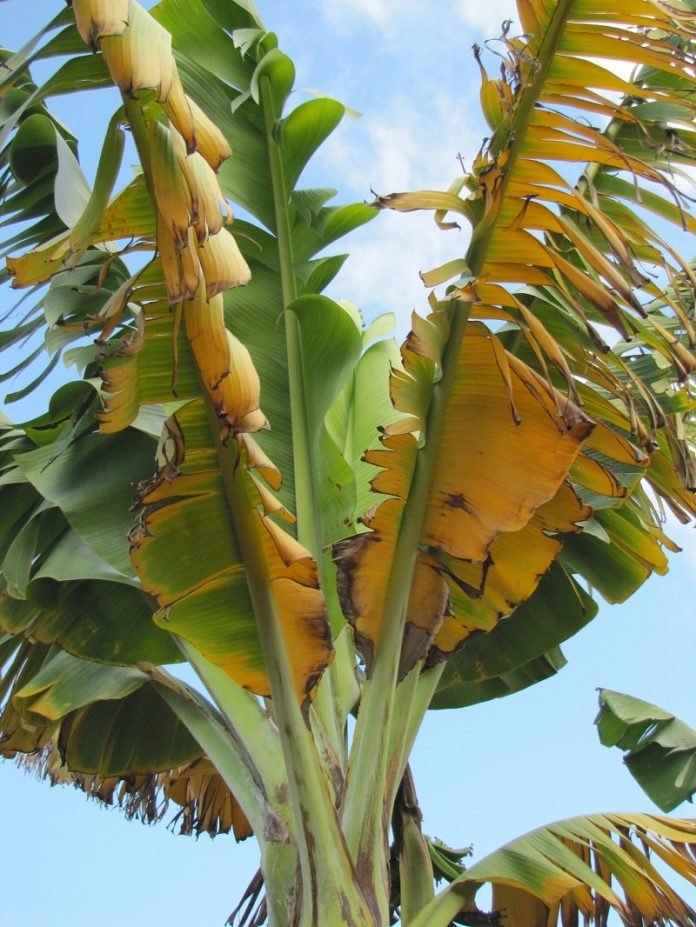
Bananas, the popular fruit we enjoy for breakfast, are facing a serious threat that could lead to their extinction.
This danger comes from a disease known as Fusarium wilt of banana (FWB), caused by a fungus called Fusarium oxysporum f.sp. cubense (Foc) tropical race 4 (TR4).
This fungus is spreading rapidly and endangering the bananas we commonly find in supermarkets.
However, there’s hope on the horizon.
Scientists from the University of Massachusetts Amherst, along with an international team, have made a significant discovery that might help protect bananas from this deadly disease.
Their research, published in the journal Nature Microbiology, reveals that the current strain of TR4 is different from the one that wiped out bananas in the 1950s. This new strain’s power comes from a set of extra genes related to the production of nitric oxide, a chemical that seems to make the fungus more deadly.
To understand this better, let’s look at some banana history. The bananas our grandparents ate were a variety called Gros Michel. Unfortunately, these bananas were nearly wiped out in the 1950s by a previous strain of Fusarium wilt.
As a result, farmers turned to a new variety, the Cavendish banana, which was resistant to the old disease. For decades, the Cavendish bananas thrived, becoming the most popular type sold worldwide.
But in the 1990s, the new TR4 strain began attacking Cavendish bananas, spreading from Southeast Asia to Africa and Central America. This new outbreak has caused significant concern because, unlike the previous strain, TR4 seems much harder to stop.
The research team, led by Professor Li-Jun Ma from UMass Amherst, spent ten years studying this new outbreak. They compared 36 different strains of Foc from around the world, including those that targeted Gros Michel bananas. What they found was surprising: TR4 didn’t evolve from the strain that killed the Gros Michel variety. Instead, it has some unique accessory genes that produce nitric oxide, which appears to play a crucial role in the disease’s virulence.
To further test their theory, the scientists removed two genes responsible for nitric oxide production from the TR4 strain. The result? The fungus became much less harmful. This discovery opens up new possibilities for developing treatments or strategies to control the spread of TR4.
However, the bigger issue might be how we grow bananas. Professor Ma warns that growing large areas of just one type of banana, known as monocropping, makes them an easy target for diseases like TR4. To protect bananas, she suggests trying different varieties that might be available at local specialty stores.
With this new knowledge, scientists are hopeful that we can slow down, or even stop, the spread of this deadly disease and save one of our favorite fruits from disappearing.



